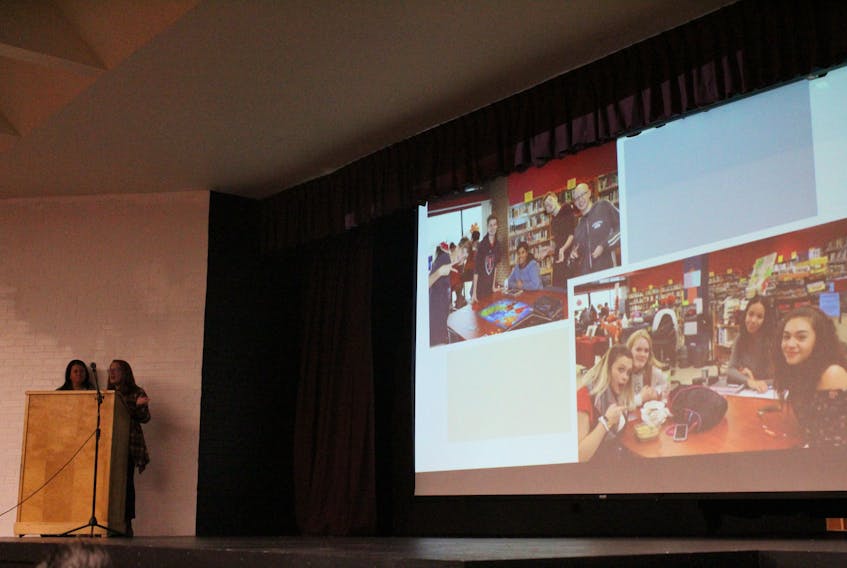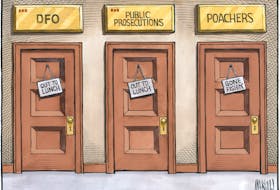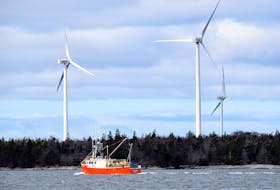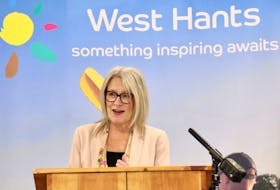SACKVILLE, N.B. - The consensus from the community was clear on one thing – Marshview Middle School should close.
But exactly what should happen from there is still up in the air as parents, educators and students try to decide on the best option for Sackville.
Many of those interested stakeholders were on hand for a public meeting Nov. 27 at Tantramar Regional High School, the second in a series of three meetings looking at the future of Sackville’s three schools.
District superintendent Gregg Ingersoll said the intent of the study at this point is to close Marshview. Because of its age and condition, the school does not qualify for a “mid-life upgrade” and would be limited to maintenance upgrades. But if it were the desire of the community, “we could leave everything the way it is and keep moving on.”
The biggest community concern? That the public will not have a say in the significant decisions made in the school design process.
“There’s a real desire for meaningful community engagement in the process of designing and configuring the schools of this town. I think you’ve heard that loud and clear in the presentations here tonight,” said Andrew Wilson, who was speaking on behalf of the Parent School Support Committees (PSSC) of all three Sackville schools.
Wilson said the PSSCs are recommending that, of the four options on the table, the District Education Council (DEC) move ahead with the fourth, which he said could take the form of “a meaningful and substantial community-led process for the planning and locating of new facilities.”

The four options under consideration:
- Maintain the status quo
- Close Marshview Middle School and reconfigure Salem Elementary to a K-5 school and Tantramar High to a Grade 6-12. In this scenario, about 70 students would go to Salem and about 200 would be moved into TRHS. This would require mid-life upgrades to both schools, as neither is built to handle the additional capacity. He said while TRHS may seem like it has a lot of extra space, it was not built for middle school students and would therefore require different amenities to make it work. A midlife upgrade of Salem is estimated at $8.3 million while changes to TRHS would cost approximately $7M.
- Close Marshview Middle, build a new K-5 and a new 6-12. Ingersoll said a new K-5 school is estimated at $19M while a new 6-12 school would cost about $29M.
- A combination of options two and three or other options brought forward by the public during the study.
‘Forge a cooperative relationship’
The first three options – for logistical and financial reasons - just don’t make sense for Sackville, says Wilson. The first option - maintaining the status quo - is definitely not supported by the PSSC, said Wilson.
“Marshview needs to close . . . it is unsafe and an unhealthy working and learning environment.”
The second option - which recommends retrofitting Salem Elementary into a K-5 school and Tantramar High to a Grade 6-12 school - is also not a good idea, he said.
Salem is in poor condition, has a number of space issues, high deferred maintenance costs and an undersized gymnasium.
Brian Neilson, Home and School Association president for Salem Elementary School, spoke about the lack of space in the current K-4 school and expressed concern about adding more students to a school that is already over-capacity.
“The idea presented in option two of moving Grade 5 students to Salem will take away what precious space we do have now. Taking further away from our library and not having an art room . . . would just be so heartbreaking for the kids," he said.
“We would just like you to give some real consideration to doing something that actually improves and increases the resources and the opportunities available to the boys and girls of our town.”
Wilson, noting that the costs would exceed the Department of Education’s threshold for a mid-life upgrade, added, “reconfiguration would not make sense."
Tantramar, as well, has its own significant deferred maintenance costs and it would also be a challenge to redesign a school that was originally built as a high school to fit other grade levels.
“To attempt to retrofit the current Tantramar building for this purpose, filling to capacity a 50-year-old structure with significant ongoing maintenance issues and an outdated floor plan, just does not seem a feasible solution, logistically or economically.”
TRHS teachers Christianna Steeves and Tanya Bostick spoke on behalf of staff at the high school about on how the Department of Education specifications would limit the design of a new high school build or a retrofit in terms of space and configuration. They expressed concerns about losing important spaces and resources including the shop classes, wetlands, theatre, music space, learning commons, virtual learning centre, playschool, computer lab, cafeteria, breakfast room, sports fields, and culinary labs.
“We believe that maintaining TRHS as a separate high school is the best option for all students. We have grown and adapted our programs for the school space," said Steeves.
“Based on the recommendations the DEC is considering, we believe that in order to keep providing opportunities . . . we recommend that TRHS receive a midlife upgrade to bring the building up to date and remain a 9-12 educational facility while considering other options for the younger kids.”
For Joe Caswell, a TRHS student who spoke on behalf of the student council, the possibility that sports or extra-curricular activities at the high school level could be lost if TRHS is retrofitted to include middle school students was a key concern.
“Sports play a huge part in the physical as well as mental wellness of our students at this school. If you were to look at some other options, you might be sacrificing that (athletic) space," Caswell said.
“The high school, I don’t believe, has the space to accommodate an additional 200 students. And sports, being such a huge part of our school, is not something I think we should sacrifice on at all. If we’re talking about options, most of the students I’ve spoken to, their recommendation is to just leave us alone.”
The third choice - which involves construction of two new schools (K-5 and 6-12) - doesn’t take many concerns into account, said Wilson, such as the grade configurations, which are “not seen as a good fit for this community,” as well as the potential loss of some of the amenities and programs the schools have developed over the years. These include the Tantramar Wetlands program, Trailblazers, playschool, Marshview’s engage program, and outdoor learning spaces.
Casey Murray and Isaac Ayer are Tantramar Wetlands Centre students. TWC is an environmental education program at TRHS that teaches the importance of wetlands conservation to public school children and teachers from across the Maritimes. It features a 40-acre freshwater wetland, a 1.5-kilometre trail, an outdoor classroom, off-grid storage barn, critter dipping dock, teaching theatre, wet lab and classroom.

“This is not just a frog pond that can be picked up and moved anywhere. For 20 years, this has been evolving, and if we were to move schools and even if we were lucky enough to build a new one, we would be putting ourselves 20 years into the past," said Murray.
Ayer added that he felt it was "pretty obvious" the program was very valuable and reaches a lot of people with an important message.
"We develop a lot of knowledge and life skills along the way. We want the Tantramar Wetlands Centre to continue," he said.
“It would be very expensive to try to make this somewhere else and I have no idea where that funding would come from. So, our philosophy as far as what option to choose would more or less be, “if it ain’t broke, don’t fix it.”
Community learning campus?
For Wilson, option four is the most appealling.
“We want to consolidate all of the wonderful things already happening in education in our schools and help provide the support to expand and extend them," Wilson said.
Wilson said the PSSCs are asking for the DEC to consider partnering with the community “to forge a cooperative relationship with the community of Sackville that will enable us to create something truly groundbreaking in this place.”
Members of Sackville Schools 2020 also hope the DEC will decide on option four.
Sackville Schools 2020 has proposed a ‘community learning campus’ to replace the three local schools. The campus model the committee is proposing would see students from kindergarten to Grade 12 sharing facilities and resources with one another as well as the wider community. The facilities could incorporate features such as community kitchens, health services, a community library, performance space, and shared athletic space. It would also bring in partners such as Mount Allison University, the town of Sackville, the Tantramar Seniors’ College, Tantramar Family Resource Centre and local businesses.

Karen Sears, a SS2020 member, said the fourth option would allow Sackville to develop a model that is led, shaped and built by the community, rather than relying on the Department of Education to make decisions such as the location, grade configuration and amenities of the schools.
Sears agrees that Marshview is beyond its life expectancy and “given all the demographic analysis and current space configurations, we believe all three Sackville schools should be looked at. There should be a holistic plan for them that addresses the needs for all of our children.”
“This type of new, integrated, modern school would bring people here, it’s very attractive to people who don’t live here. There’s going to be more people coming to Sackville, boosting the economy and helping its growth.” - Parent Rhonda Stone, who said one of the main reasons her family opted to relocate to Sackville recently was the SS2020's vision.
Fellow member Michael Fox said Sackville is a unique community that views education as a way of life.
“We really want to be at the table and to be part of forming the next set of integrated education facilities in this community,” he said.
“We’re proof that mixed ages – and wide ranges of ages - can function together. And they can not only function, but they have increased opportunities to grow and to learn together that aren’t easily available when ages are separated.
“We really hope that you (DEC members) remember that playschool is an integral part of the high school and how well it works. So, we’d really like to just make sure that this partnership continues.” - Allison Butcher, playschool teacher (the Sackville playschool rents space at the high school for its programs and has been doing so for nearly three decades)
All of Sackville’s schools have significant issues and Fox said now is the time to take a look at integrating them together and to build facilities that meet the challenge of 21st-century learning.
“We want to work with the DEC, we want to be partners with the Department of Education, we want all of our schools, our educators, our parents, our community partners with the town, the province and the federal government to develop a community integrated model that works for Sackville. That’s what we’re proposing, that’s what we’re excited about.”
“We’re making the case for driven citizens working with government, working with the community to imagine facilities like this for our children and for the future of education in our community.”
“We have an opportunity I think for us to situate ourselves as a leader in education, as a leader in knowledge.
“It’s not a matter of just closing a school, in my view, it’s a matter of changing the way we move forward.” - Sackville Mayor John Higham
But not all in attendance were in favour of the SS2020 plan. Sackville resident Michael Tessier said he's concerned about the cost of the proposal.
“It’s my belief that this cost would come at the future expense of the students’ education," he said.
“I’m hoping that the three schools aren’t all allowed to close.
“I don’t think amalgamating a grade school into a high school would create problems. I think all their sports teams, the wetlands . . . would still flourish if it was done in the proper way.”
The final meeting, at which the District Education Council will make a decision on which of the four options to recommend to the Minister of Education, will be held Tuesday, Dec. 4 at Lou MacNarin School in Dieppe. Once the council makes a decision, it will forward the request to the province's education minister, who can then accept or reject it.
Have your say
READ MORE:
• Future of Sackville schools: another option to consider
• What does the future of Sackville schools look like?
• Upgrade Sackville schools or build new ones?
Why is the district considering changes to Sackville’s schools?
The school district is in the process of carrying out a sustainability study on Marshview, as it is operating under capacity and requires significant and costly repairs. The district education council (DEC) voted in May to carry out the study under provincial Policy 409 as part of its capital spending plan.
“What brought us here was Marshview Middle School,” said Gregg Ingersoll, district superintendent, during the public meeting. “Marshview has reached an age where we have to do something about that school. The school is past its prime to have a midlife upgrade or to revive the school. So, we’re looking at closing that school and moving the students somewhere else. The question is, where do we move them?”
Originally built in 1949 as a high school with a capacity of more than 600 students, Marshview now has an enrollment of 271 students from Grade 5 to 8. The school requires more than $2.34 million in deferred maintenance work – including upgrades to the ventilation system, washrooms, walkway, heating system, floors and site improvements, among others. Annual operating costs for the school come in at around $119,000 – with nearly half that amount spent on heating costs.
Want to know more?
Check out these Frequently Asked Questions from the Sackville community on the Anglophone East School District website. http://web1.nbed.nb.ca/sites/ASD-E/Sustainability/Sackville%20Documents/FAQ%20Sackville.pdf
This provides an overview of the Department of Education guidelines for educational facilities in New Brunswick. http://web1.nbed.nb.ca/sites/ASD-E/Sustainability/Sackville%20Documents/Educational%20Specifications%20for%20New%20Schools%20-%20EECD.pdf









